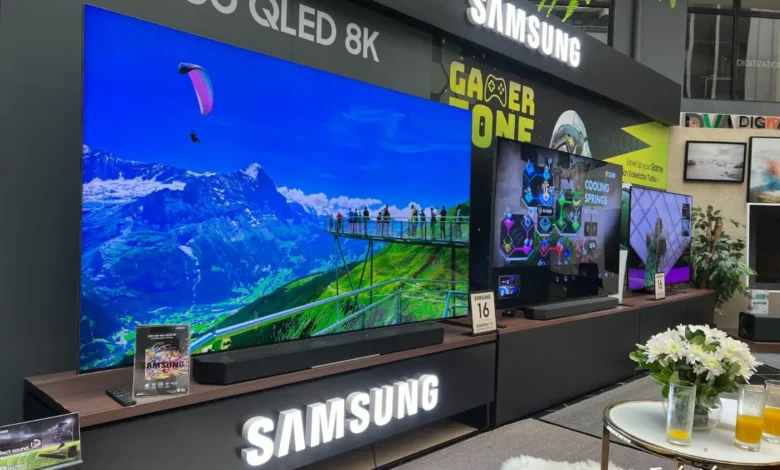
Insights At a Glance:
- Channel numbers will be standardized nationwide, ending messy, inconsistent lineups.
- Viewers can select their region to prioritize local channels, with automatic background updates for new stations.
- A 7-day electronic program guide (EPG) is now required, showing current and upcoming shows with rich metadata.
Let’s be honest — scanning for channels on your current digital decoder is a bit of a gamble. Sometimes your favourite news station pops up at channel 801 for no reason. Other times, half the stations are duplicated or jumbled. Not exactly user-friendly.
Well, that’s about to change. Thanks to the Communications Authority of Kenya (CA) and its updated DVB-T2 receiver standards (taking effect on July 1st, 2025), your next TV or decoder will come with some seriously clever improvements under the hood — especially when it comes to how you find, organize, and explore channels.
Let’s break it down — here’s what you’ll actually notice when you start using one of these upgraded receivers.
1. Logical Channel Numbers (LCNs) – At Last!
Ever wish your favorite channels had a fixed spot on your remote? The CA’s got you covered with Logical Channel Numbers (LCN), now mandatory for all DVB-T2 receivers. Each channel gets a unique number from 1 to 799, so Citizen TV might always be “001” and KBC “002,” no matter where you are in Kenya. Akili Partners called this a game-changer, and they’re not wrong. That means:
- No more NTV randomly ending up on channel 600.
- No more confusing duplicates.
- Just a consistent, easy-to-remember channel lineup across the country.
If you like knowing that Citizen is always on 001 and KTN News is on 004, you’re going to love this.
2. Region-Aware Channel Lists
Receivers must support both LCN descriptor and LCN descriptor V2, which add regional smarts. Live in Nairobi? Your receiver will prioritize local channels at LCN 001, while northern or southern variants slide to 100+. If you move to Mombasa, a quick scan reorders the list based on your region. Duplicate channels? The receiver picks the one with the best signal, tucking others into an “overflow” area (800-999). Pendo TV and Digital Broadcasters Association loved this setup for its user-friendliness.
3. Scanning That Keeps Up
Your receiver will now auto-scan for new channels, ensuring you never miss a fresh station popping up in your area. It clears old service lists and grabs the latest from the Service Description Table (SDT), covering the UHF band (470-694 MHz). If a channel moves or a new multiplex appears, your box updates quietly in the background, no babysitting required. These upgraded boxes will now patrol the airwaves quietly in the background, updating your list to:
- Add new channels when they go live
- Remove dead ones without breaking your lineup
- Keep your guide fresh without bugging you
The best part? It happens silently and only when you’re not actively watching something. The CA’s Analysis of Comments shows stakeholders like Kalokol Radio Broadcasting were thrilled with this adaptability.
Hidden channels (marked “not visible” in the LCN descriptor) won’t clutter your menu but can still be accessed by typing their number—perfect for niche services. Plus, the receiver handles network evolution like a champ, adding or deleting services without fuss, even if a signal dips during a storm.
4. A Real EPG – Your Week at a Glance
Yes, it’s finally here: a proper 7-day Electronic Program Guide (EPG). Press the “info” button, and the “Now and Next” banner pops up, showing what’s on and what’s coming next. Expect details like:
- Parental ratings (handy for family viewing)
- Current time and date
- Program start/end times
- Channel name and LCN
- Event name, short description, and genre
This banner appears for about 2 seconds when you change channels, keeping you in the loop without blocking the screen. The CA mandates this info comes from the Digital Video Broadcasting Service
Information – Event Information Table, present and following (DVB SI EITp/f) tables as per EN 300 468 (DVB SI EITp/f), ensuring accuracy. Digital Broadcasters Association called this “excellent,” and we agree—it’s like having a TV guide at your fingertips.
Want to plan your week? The EPG “Schedule” pulls up to 7 days of listings, updated in the background so it’s ready when you hit the EPG button. It also stays accurate because the time syncs directly from the broadcast signal — no need to set the clock yourself. Whether you’re scheduling a movie night or catching up on news, this feature’s got your back.
5. Clock That’s Always Ticking
Speaking of the clock, your receiver’s real-time clock will stay spot-on, synced with Time and Date Table (TDT) and Time Offset Table (TOT) signals. Toggle between 12-hour or 24-hour formats to match your vibe, making sure you never miss a show because your TV’s living in a different time zone.
6. Hidden Channels (But You Can Still Tune In)
Broadcasters now have the option to hide certain test or backup channels from your standard list — but here’s the cool part: if you know the exact channel number, you can still access it manually. It’s like having a secret menu for those in the know. Perfect for techies, reviewers, or anyone who likes to explore.
In Summary:
These new DVB-T2 rules aren’t just about picture and sound (though we covered that in this article). They’re about making your entire TV experience smarter, smoother, and actually enjoyable.
- Your favourite stations will stay in place.
- Your local news will be front and center.
- And your program guide will finally do more than just say “No information available.”


